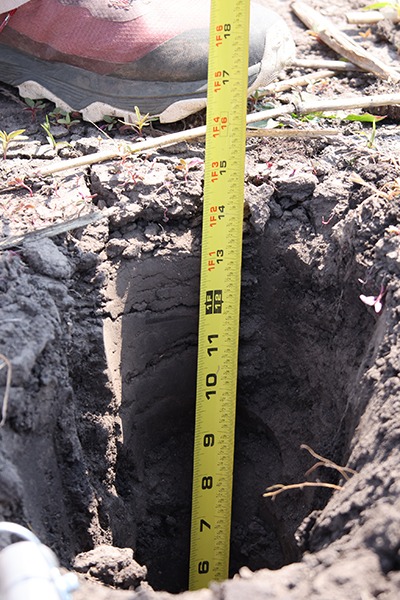What Are the Benefits of Increasing Agricultural Soil Carbon?
Content has been adapted from The Context Network “Get Smart, Stay Smart” Ag Carbon Service.
The short answer: Increasing carbon content in agricultural soils leads to a number of co-benefits, like:
- Increased water storage,
- More biological activity,
- Better soil aggregation,
- Improved yield and crop resilience, and
- Higher profits.

Image provided by the Context Network, LLC.
The big picture: the main contributor to agricultural soil carbon is plant biomass, broken down by microbes.
Adopting practices that improve soil organic carbon levels will, over time, also improve soil health. For example, consider leaving plant residue on fields after harvest, reducing tillage (or using no-till), and adopting cover crops.
Every farm is different—agriculture is local. But adopting practices that sequester carbon can lead to a number of benefits over time. These benefits include the following:
- Soil water storage improves with high levels of soil organic carbon content. Improved soil water storage means soil retains water better after rainfall, reducing irrigation needs. For dryland farms adopting conservation practices, greater water storage also means greater resilience to drought conditions and decreased erosion.
- Biological activity increases as you adopt practices that sequester carbon. Plant matter serves as food for soil microbes, while improved nutrient management and minimal soil disturbance together create a great environment for soil microbes. Plus, diverse crop rotations mean more diverse soil biology!
- Soil aggregation improves as soil organic matter increases. Organic matter—carbon—serves as the glue holding soil aggregates together, creating pore space for better water infiltration and spaces for soil biological activity to happen. Plus, better aggregations and channels provide great habitat for earthworms.
- Crop yield and resilience improves over time with adoption of practices that sequester carbon. The Soil Health Institute reports that 97% of farmers in a 9-state economic analysis reported their crops were more resilient to extreme weather after adopting soil health systems.
- Profits from the farm can increase over time, too, as farmers adopt practices that sequester carbon and improve the soil. Improved nutrient management, fewer inputs, and more crop resilience can all translate to long-term profit. That same study by the Soil Health Institute found that net income increased for 85% of surveyed farmers growing corn and 88% of farmers growing soybean.
No two farms are the same, and the changes one farm adopts might take longer to show benefits compared with another farm making similar changes. Yet, sequestering carbon by adopting improved management practices comes with long-term benefits to the soil, water use, and farmers’ pocketbooks.
Photo courtesy of USDA.








